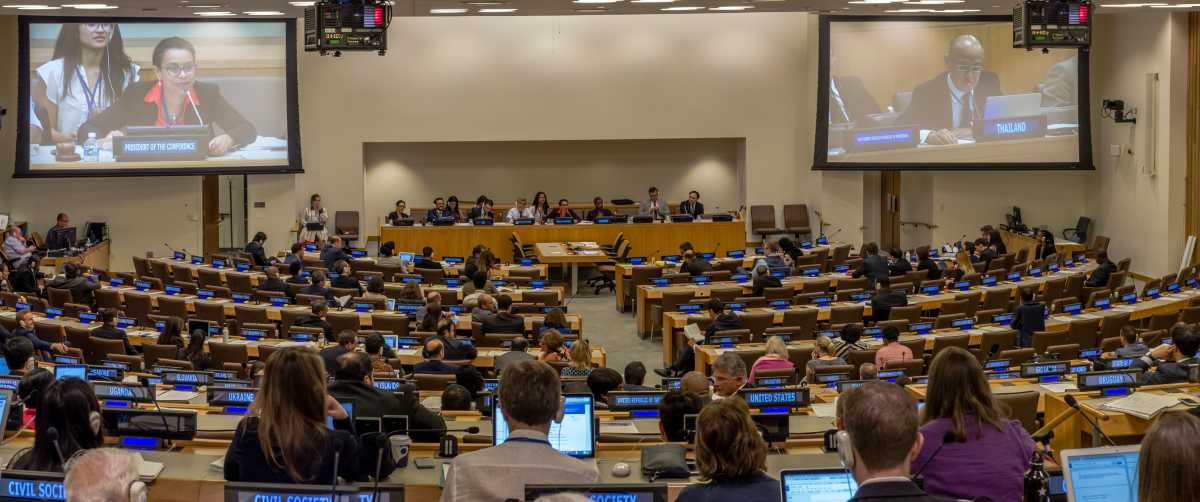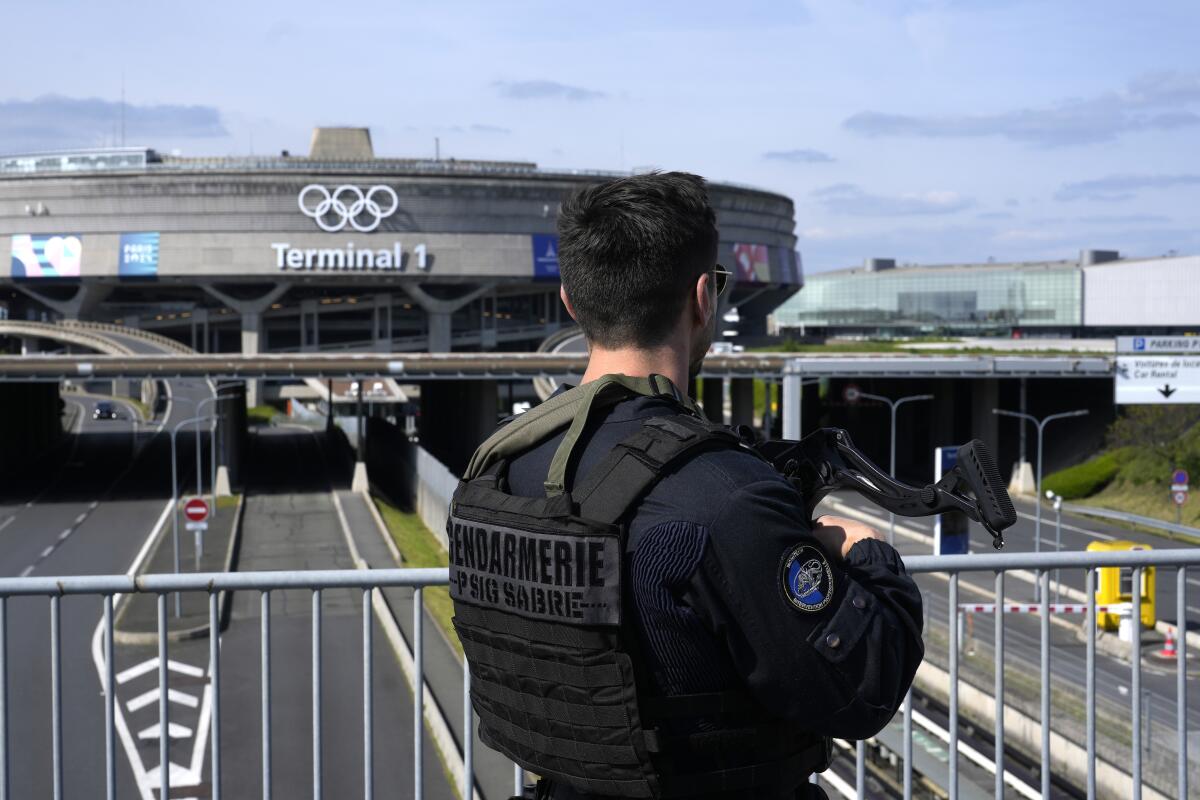European Centre For Counterterrorism and Intelligence Studies -Germany and Netherlands-
TPNW’s Entry into Force: A Historical Step that Symbolises a New Era of Disarmament and International Security
By Mingson Mingina
On 22 January 2021, the Treaty on the Prohibition of Nuclear Weapons (TPNW) came into force as binding international law for its first 50 States Parties. The entry into force of the Treaty represents an important step in the efforts of the global community to pave the way towards the abolition of nuclear weapons. TPNW codifies the standards and actions needed to create and maintain a world without nuclear weapons. The impact of the Treaty will be gradually being built and will depend on how its provisions are accepted and implemented by each state.[1] This historic Treaty that becomes the new binding international law also represents the development and consolidation of a universal commitment to nuclear disarmament.
With the entry into force of the TPNW, nuclear weapons will be subject for the first time to a global prohibition treaty, finally aligning nuclear weapons with other weapons of mass destruction, all of which are already subject to treaty-based prohibitions. The TPNW provides a framework for verifiable elimination of nuclear weapons and requires its States Parties, i.e. States that have ratified or acceded to the Treaty, to assist victims and to address environments affected by the use and testing of nuclear weapons.[2] The Treaty was negotiated taking into account the increasing likelihood of the use of nuclear weapons, either intentionally or accidentally, and the catastrophic humanitarian consequences that would result. Despite this historic and symbolic fact, the entry into force of the TPNW marks a new era of multilateral disarmament and a challenge to the nuclear-weapon states and framework states that must strengthen their commitment to nuclear disarmament that is once insufficient for decades before the adoption of the TPNW in 2017.
Why a Nuclear Weapons Ban Treaty?
The existence of nuclear weapons poses a constant threat to the world. The total elimination of these weapons can only be achieved by reviving dialogue and holding genuine negotiations, and by returning to a common vision that leads to nuclear disarmament. [3] This is why the Treaty reinforces the taboo on the use of nuclear weapons and strongly discourages their proliferation. The Treaty alone will not make nuclear weapons disappear overnight, but it unequivocally proclaims the use, threat to use or possess these weapons is totally unacceptable.[4]
The Nuclear Weapons Ban Treaty was conceived as a contribution to the advent of a nuclear-weapon-free world. Its general obligations will prohibit the parties from carrying out various activities related to nuclear weapons or from assisting in carrying them out. It includes positive obligations to assist victims in the use or testing of nuclear weapons and to restore the environment. It also provides that a nuclear-weapon state can join and then eliminate its arsenal. Although the TPNW creates legally binding obligations only for States Parties, it strengthens the existing law, applicable to all States, regarding the non-use and elimination of nuclear weapons, and strengthens standards against nuclear weapons. As standards change, incentives may also change and non-party states should change their behaviour due to the increased stigma of nuclear weapons. The entry into force of the TPNW on 22 January 2021 as binding international law will be the next step in the process of establishing the authority of the Treaty and its norms and rules in world policy. Other signatories to and beyond the 122 who voted in favour of the adoption of the Treaty at the Un in 2017 and further ratifications will continue the process of increasing global authority.[5]
The entry into force of the TPNW a historical fact marking a new chapter in disarmament
“This is historic, because nuclear weapons can no longer be seen as something positive,” said Jean-Marie Collin, spokesman for the International Campaign to Abolish Nuclear Weapons (ICAN), 2017 Nobel Peace Prize-winner. The ratification of the Treaty by 50 states shows that a majority of countries want to move towards nuclear disarmament. It took three years for the Treaty, already approved by the United Nations General Assembly in July 2017, to enter into force.[6] The Treaty prohibits the use, development, production, testing, parking, storage and threat of use of such weapons. This text is not symbolic since the violation of the Treaty by the signatory states will lead to sanctions.
The UN chief also praised the work of civil society, which helped facilitate the negotiation and ratification of the Treaty, stressing that the entry into force is “a tribute to the survivors of the explosions and nuclear tests, many of whom have advocated for this Treaty”. The entry into force of the Nuclear Weapons Ban Treaty is the culmination of a global movement to draw attention to the catastrophic humanitarian consequences of any use of nuclear weapons,” Guterres said.
Among the most important players, the International Campaign for the Abolition of Nuclear Weapons (ICAN), which won the Nobel Peace Prize in 2017, said, through its Executive Director, Beatrice Fihn, that the entry into force of the Convention was “a new chapter in nuclear disarmament”. Decades of activism have made it possible to achieve what many deigned to be impossible: “nuclear weapons are banned.”[7] This Treaty also states that the countries that ratify it must “under no circumstances develop, test, produce, manufacture or acquire, possess or store nuclear weapons or other nuclear explosive devices.
The entry into force of the TPNW as a glimmer of hope symbolises an essential step towards the abolition of nuclear weapons
The Nuclear Weapons Ban Treaty is a glimmer of hope: the hope that one day humanity will escape the spectre of nuclear war, which we know would lead to unimaginable suffering. This treaty is an essential and long-awaited step towards a world without nuclear weapons. Like chemical and biological weapons, nuclear weapons must be stripped of legitimacy in order to be able to eliminate them. This treaty is an essential and long-awaited step towards a world without nuclear weapons.[8]
The Treaty provides a solid basis for achieving this objective: Because it explicitly and totally bans nuclear weapons, it reinforces the taboo that hangs over their use and reinforces the arguments against their proliferation; shows the way forward to achieve their elimination, it represents a concrete step towards the implementation of the nuclear disarmament obligations that are already in force, including those set out in the Nuclear Non-Proliferation Treaty. While it remains a cornerstone of disarmament efforts, it desperately needs real progress in disarmament obligations to remain credible;[9] finally, because it provides assistance to victims of the use or testing of nuclear weapons, as well as the rehabilitation of contaminated environments, the Treaty recognises that it is the responsibility of States to protect any form of life exposed to the effects of these terrifying weapons.
The Nuclear Weapons Ban Treaty (TPNW), adopted by two-thirds of UN member countries in 2017, enters into force and makes nuclear weapons illegal, whether their possession, manufacture, or the threat of their use, i.e. the nuclear deterrent strategy. TPNW fills a legal vacuum and completes the ban on other weapons of mass destruction, biological and chemical, as well as certain conventional weapons condemned for their impact on civilians.[10] Its implementation is without prejudice to the obligations under the States Parties under the current international agreements to which they are parties, provided that these obligations are compatible with this Treaty.
Endnotes
1-Countdown to TPNW into effect: https://banmonitor.org/ (consulted on 20/01/2021 at 9:00 a.m.)
2-How the Nuclear Weapons Ban Treaty Affects the US and why it should accept its entry into force : https://jia.sipa.columbia.edu/online-articles/how-treaty-prohibition-nuclear-weapons-impacts-united-states-and-why-united-states?s=08 (consulted on 20/01/2021 at 9:37 a.m.)
3-Ensuring our common future: disarmament programme, Office of Disarmament Affairs, 2018. Pg.x
4-Let us decide the future of nuclear weapons before they decide ours. International Committee of the Red Cross: https://www.icrc.org/fr/sans-armes-nucleaires (consulted on 20/01/2021 at 11:55 a.m.)
5-Challenging conflicting positions on nuclear weapons: https://banmonitor.org/the-context-of-the-tpnw (consulted on 20/01/2021 at 12h19)
6-The entry into force of the treaty banning nuclear weapons, a historic step or Symbolic:https://www.lacroix.com/Monde/Lentree-vigueur-traite-interdisant-armes-nucleaires-pas-historique-symbolique-2020-10-25-1201121233?s=08(consulted on 20/01/2021 at 13h11)
7-Nuclear Weapons Ban Treaty can now enter into force in January, UN welcomes : https://news.un.org/fr/story/2020/10/1080642(consulted on 20/01/2021 at 13h41)
8-ICRC President Peter Maurer delivers remarks at the signing ceremony of the Nuclear Weapons Ban Treaty. 26 September 2018, United Nations, New York : https://www.icrc.org/fr/document/pourquoi-les-etats-doivent-signer-et-ratifier-le-traite-sur-linterdiction-des-armes (consulted on 20/01/2021 at 15h01)
9-Why States Must Sign and Ratify the Nuclear Weapons Ban Treaty: Call to Humanity : https://www.icrc.org/fr/document/pourquoi-les-etats-doivent-signer-et-ratifier-le-traite-sur-linterdiction-des-armes (consulted on 20/01/2021 at 15h11)
10- The entry into force of the Treaty on the Prohibition of Nuclear Weapons (TIAN) on 22 January 2021 is no ordinary event in the climate of international tension and risk to the security of the planet. Nineteen French associations and organisations, including five former Nobel Peace Prize laureates, make a solemn appeal to the President of the Republic for France to accede to this Treaty : https://www.la-croix.com/Debats/France-doit-adherer-traite-linterdiction-armes-nucleaires-2021-01-20-1201135948 (consulted on 20/01/2021 at 15h49)
About the author:

Mingson Mingina
Mingson Mingina is an expert in Cyberdiplomacy, Co-founder and Coordinator of the Center for Research and Information for Disarmament and Security (CRIDS). He is also in charge of International Cooperation and Partnerships within CRIDS.
*All Rights are Reserved to European Centre for Counterterrorism and Intelligence Studies




